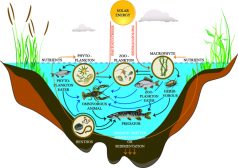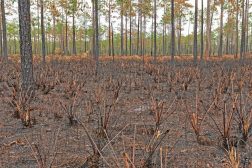Table of Contents
Definition
noun
plural: guanosine diphosphates
(biochemistry) A nucleotide made up of guanine, ribose, and two phosphate units; having a chemical formula: C10H15N5O11P2
Details
Overview
A nucleotide is an organic compound made up of three subunits: a nucleobase, a five-carbon sugar, and a phosphate group. The sugar component may either be ribose or deoxyribose. A nucleotide is, thus, a nucleoside with a phosphate group. Depending on the number of phosphate groups attached to the sugar moiety, a nucleotide may be called nucleoside monophosphate (if with only one phosphate group), nucleoside diphosphate (with two phosphate groups), or nucleoside triphosphate (when with three phosphate groups).
Depending on the pentose sugar component, a nucleoside may be a ribonucleoside or a deoxyribonucleoside. A ribonucleoside is a nucleoside with a ribose sugar component. Based on the nucleobase component, the ribonucleoside may be adenosine, guanosine, cytidine, uridine, or 5-methyluridine. A deoxyribonucleoside is a nucleoside with a deoxyribose sugar. Similarly, depending on the nucleobase component, a deoxyribonucleoside may be deoxyadenosine, deoxyguanosine, deoxycytidine, thymidine, or deoxyuridine. Also, depending on the nucleobase component, the nucleosides may be grouped into either the “double-ringed” purine or the “single-ringed” pyrimidine.
Properties
Guanosine diphosphate (GDP) is a nucleoside phosphate comprised of a ribonucleoside and two phosphate groups. It means it has a ribose as its sugar and two phosphate groups attached. Its nucleoside contains a purine base, i.e. a guanine attached to the ribose sugar. It has two phosphate groups attached to the nucleoside. The nucleoside is a pentose sugar backbone with a purine base guanine attached to it (i.e. at the 1′ carbon). The phosphate groups are bonded in series to the 5′ carbon of the pentose sugar.
Inside the cells, it can be found in the cytoplasm, mitochondria, nucleus, and Golgi apparatus. It may also occur extracellularly.
Common biological reactions
Common biological reactions
GDP can be derived from guanosine triphosphates (GTPs). It can be interconverted to GTP. In particular, GTP is dephosphorylated by GTPases (i.e. a family of hydrolase enzymes that bind to and hydrolyze GTPs) to form GDP. GDP, in turn, may be phosphorylated to become GTP with the help of pyruvate kinase and phosphoenolpyruvate.
GDP may be degraded to produce guanosine monophosphate (GMP, an adenine nucleotide with only one phosphate). Similar to other nucleotides, GMP may also be obtained from the diet. When the diet contains nucleotides, the body degrades them by the action of nucleotidases to produce nucleosides and phosphates. Nucleosides are degraded into their subcomponents (i.e. nucleobases and sugar) by the action of nucleosidases in the lumen of the digestive tract.
Biological functions
GDP is a metabolite involved in the following biological processes:1
- PKC activation through G protein coupled receptor
- Aspartate metabolism
- Citric Acid Cycle
- Congenital lactic acidosis
- Gluconeogenesis
- Glutaminolysis
- Glycogenosis, types IB and IC
- Insulin signaling
- Intracellular signaling
- Purine metabolism
- Pyruvate metabolism
- Vasopressin regulation of water homeostasis
- Warburg effect
Supplementary
Abbreviation(s)
- GDP
IUPAC
Chemical formula
- C10H15N5O11P2
Also called
Further reading
See also
Reference
- Human Metabolome Database: Showing metabocard for Guanosine diphosphate (HMDB0001201). (2019). Retrieved from Hmdb.ca website: http://www.hmdb.ca/metabolites/HMDB0001201
© Biology Online. Content provided and moderated by Biology Online Editors






